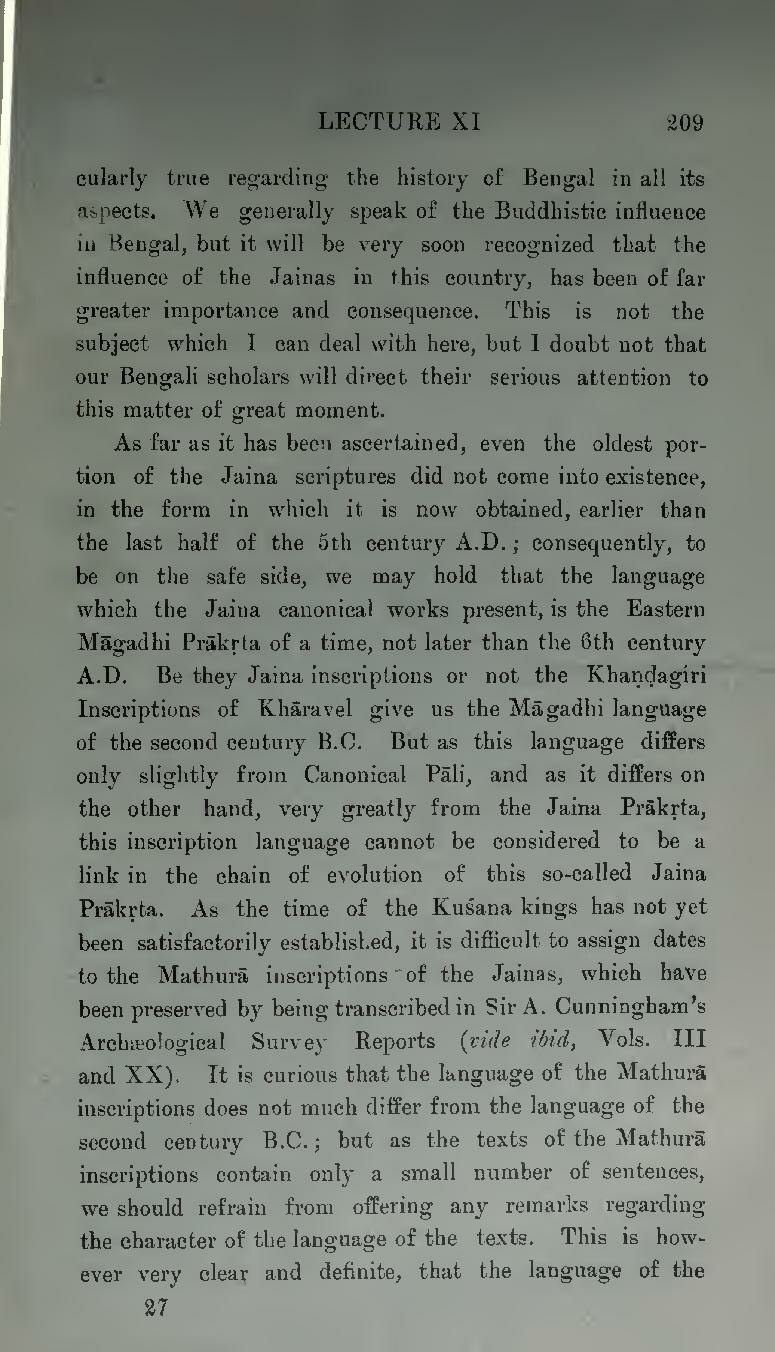cularly true regarding the history of Bengal in all its aspects. We generally speak of the Buddhistic influence in Bengal, but it will be very soon recognized that the influence of the Jainas in this country, has been of far greater importance and consequence. This is not the subject which I can deal with here, but I doubt not that our Bengali scholars will direct their serious attention to this matter of great moment.
As far as it has been ascertained, even the oldest portion of the Jaina scriptures did not come into existence, in the form in which it is now obtained, earlier than the last half of the 5th century A.D.; consequently, to be on the safe side, we may hold that the language which the Jaina canonical works present, is the Eastern Māgadhi Prākṛta of a time, not later than the 6th century A.D. Be they Jaina inscriptions or not the Khaṇḍagiri Inscriptions of Khāravel give us the Māgadhi language of the second century B.C. But as this language differs only slightly from Canonical Pāli, and as it differs on the other hand, very greatly from the Jaina Prākṛta, this inscription language cannot be considered to be a link in the chain of evolution of this so-called Jaina Prākṛta. As the time of the Kuśana kings has not yet been satisfactorily established, it is difficult to assign dates to the Mathurā inscriptions of the Jainas, which have been preserved by being transcribed in Sir A. Cunningham's Archæological Survey Reports (vide ibid, Vols. III and XX). It is curious that the language of the Mathurā inscriptions does not much differ from the language of the second century B.C.; but as the texts of the Mathurā inscriptions contain only a small number of sentences, we should refrain from offering any remarks regarding the character of the language of the texts. This is however very clear and definite, that the language of the
